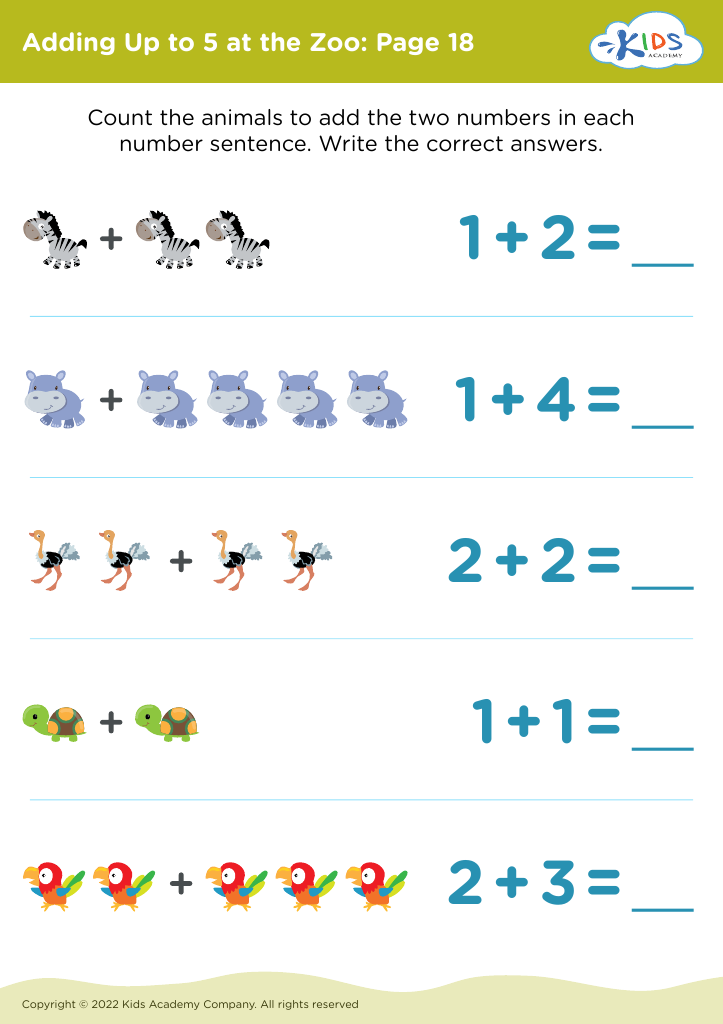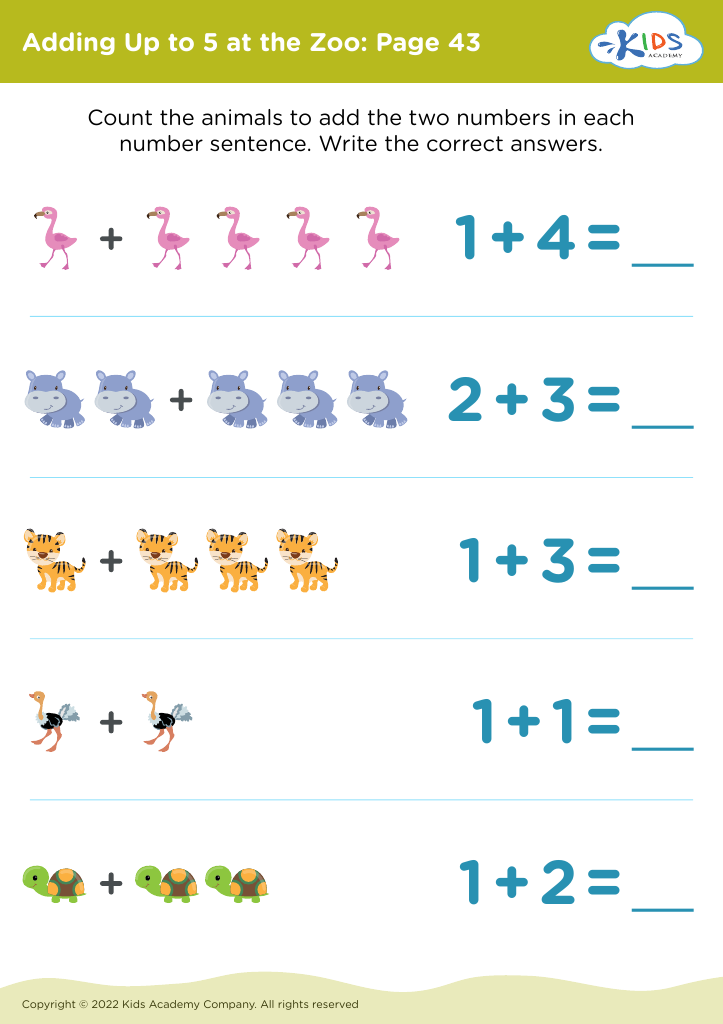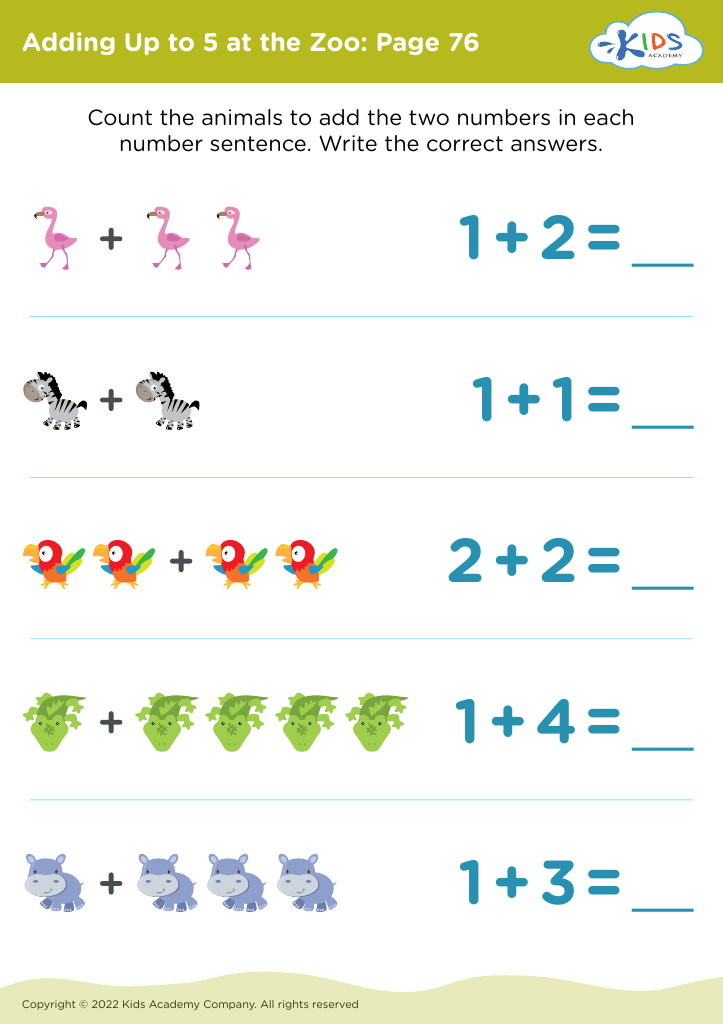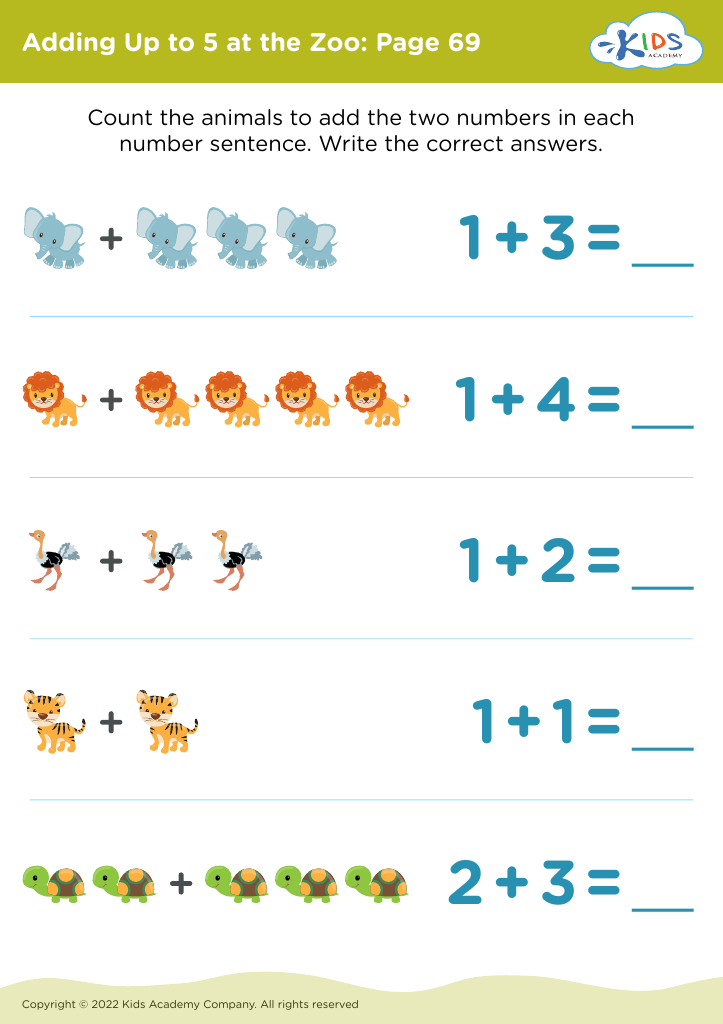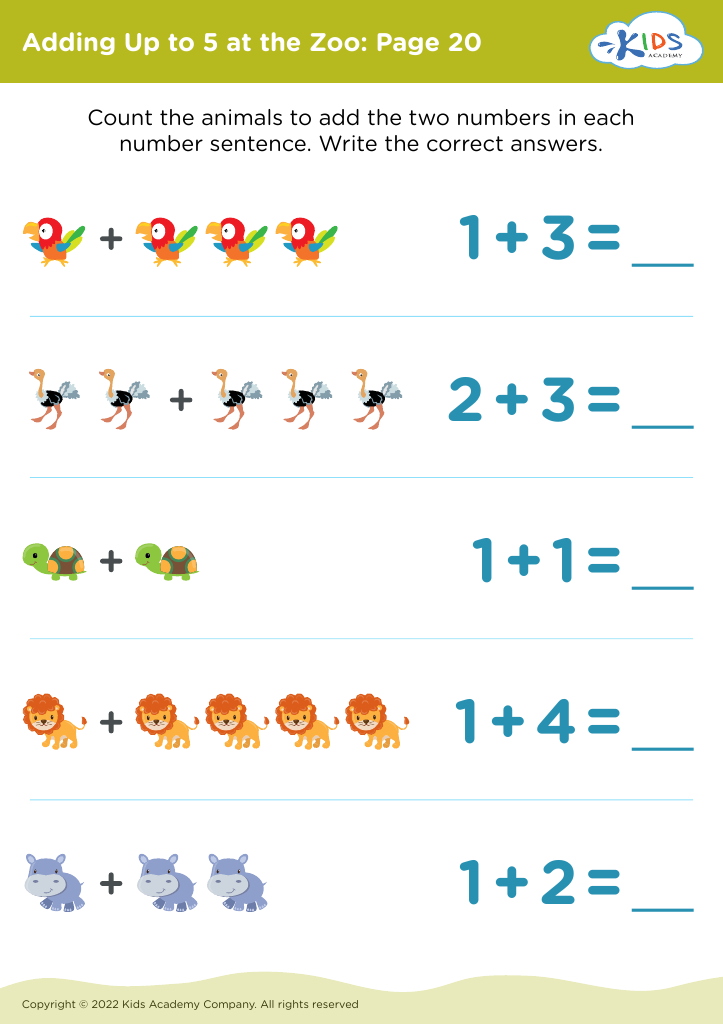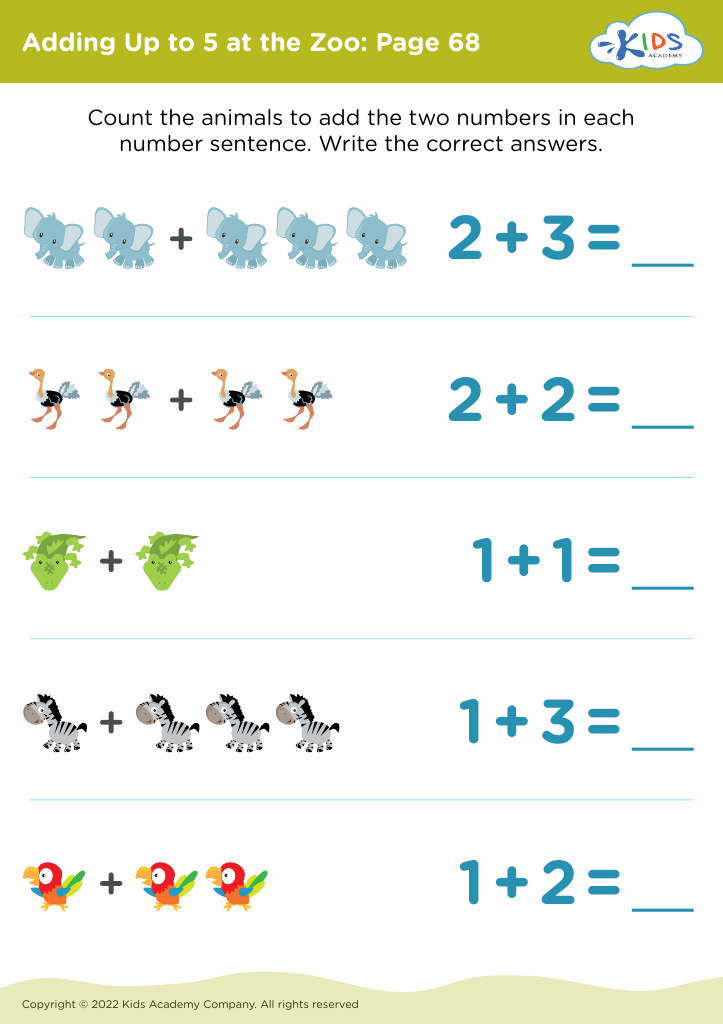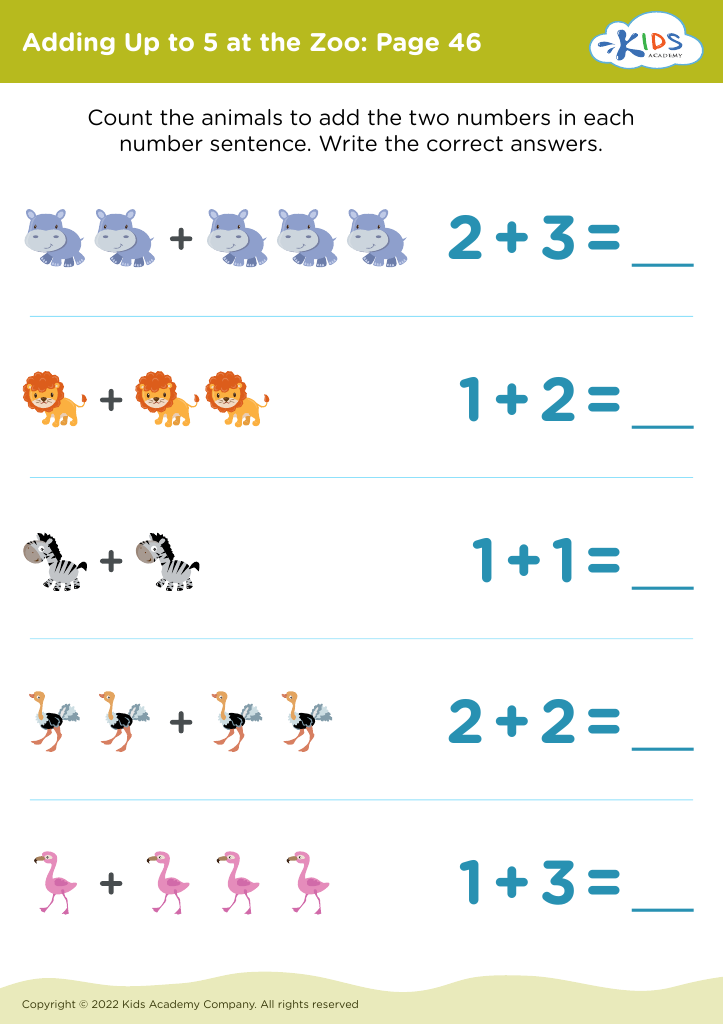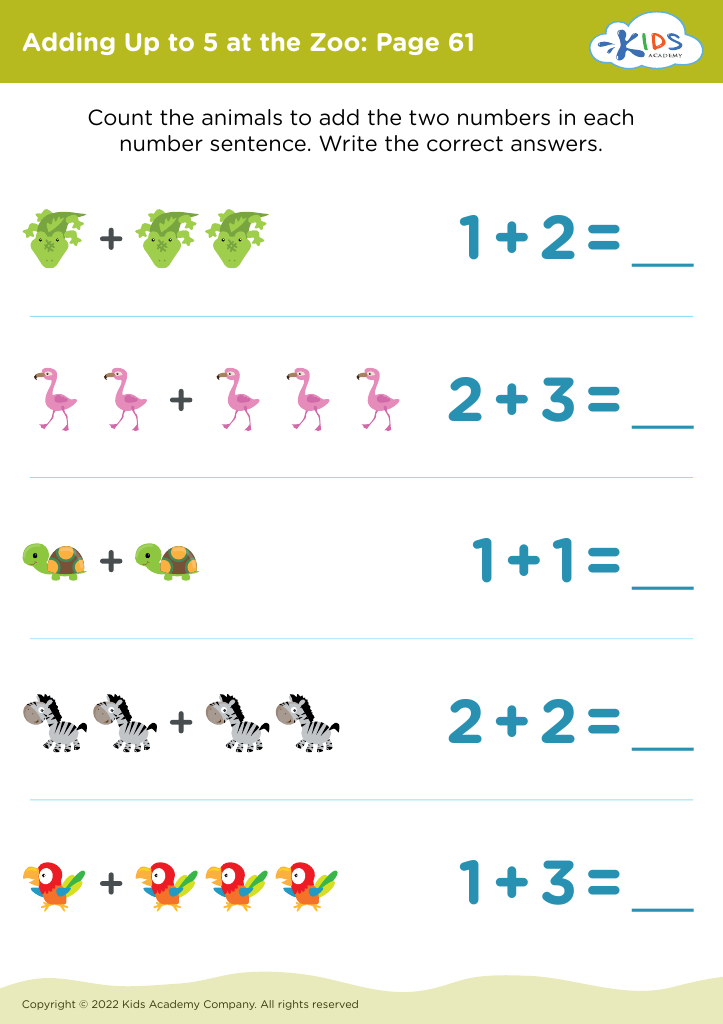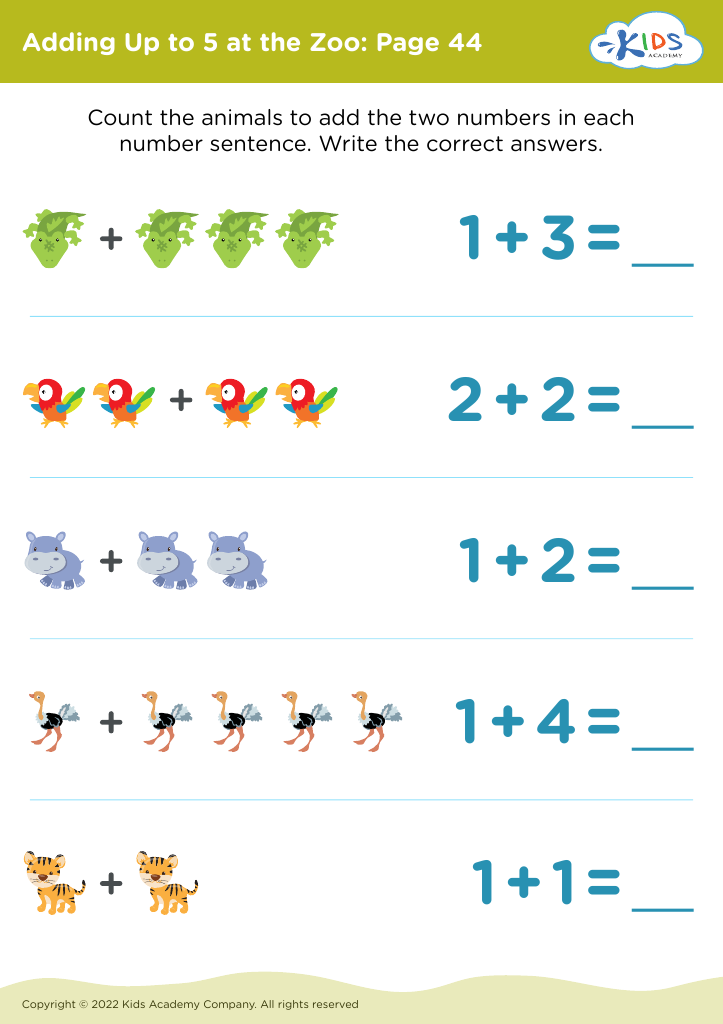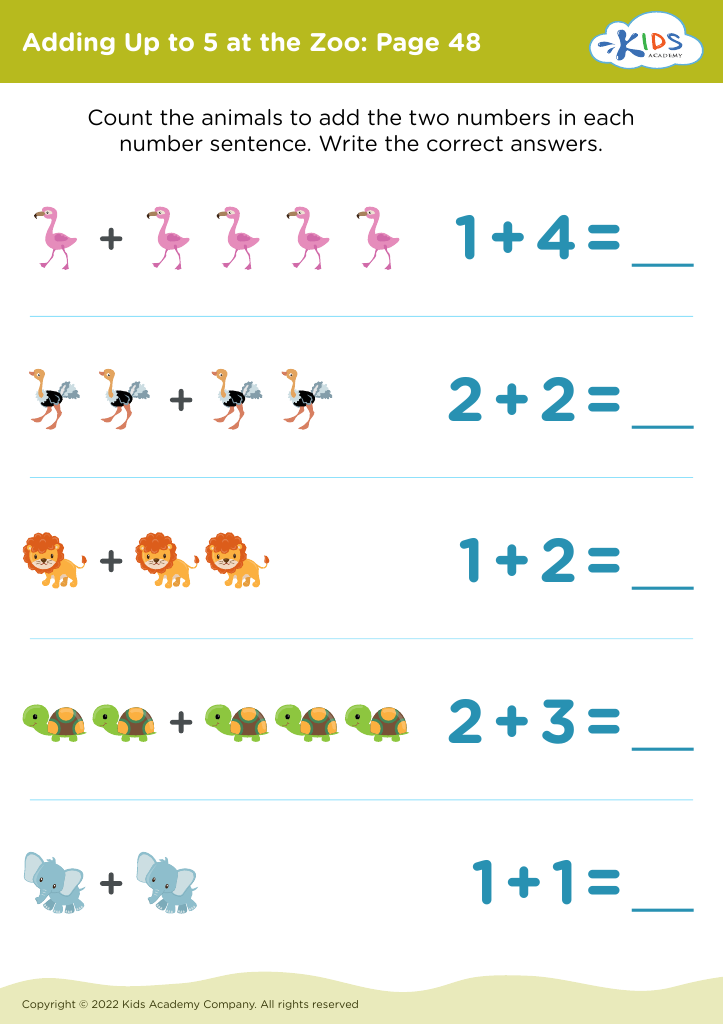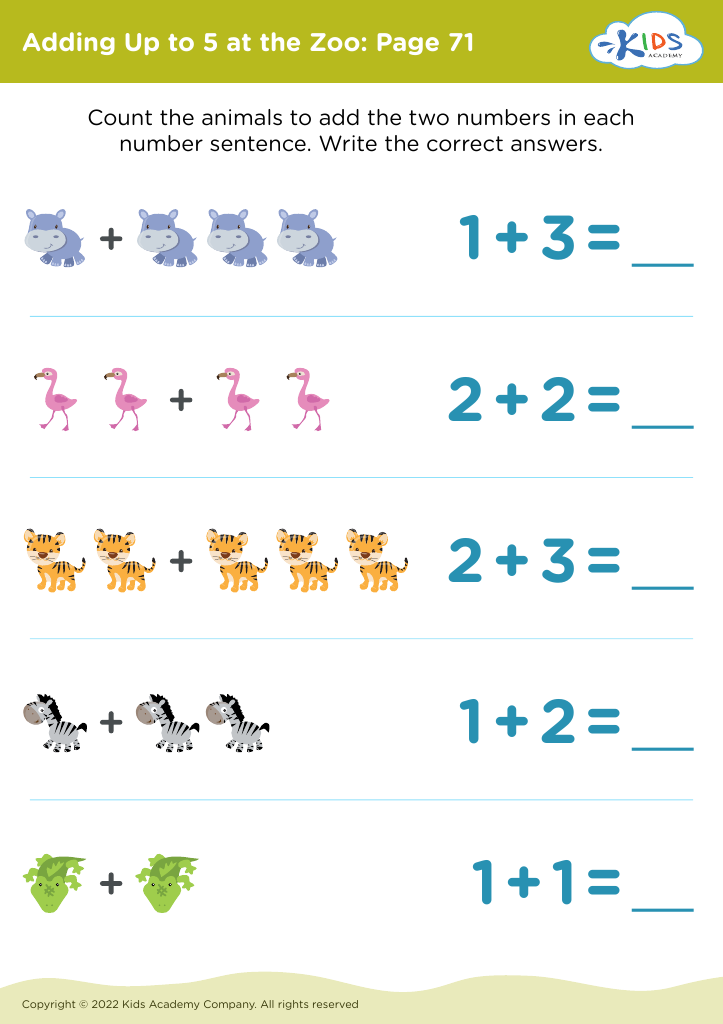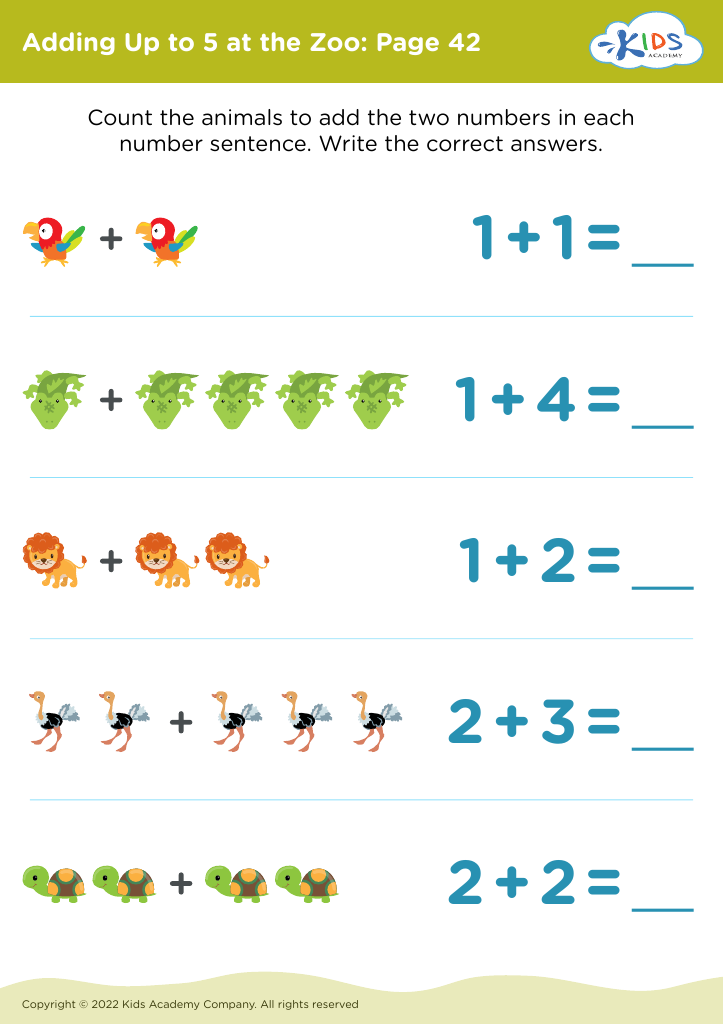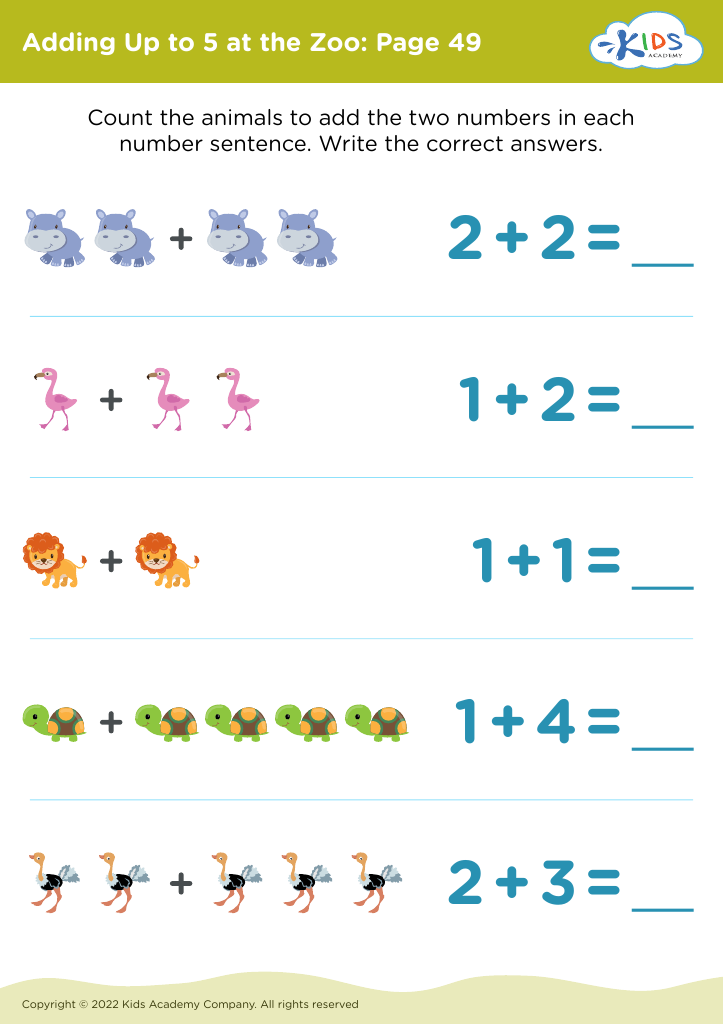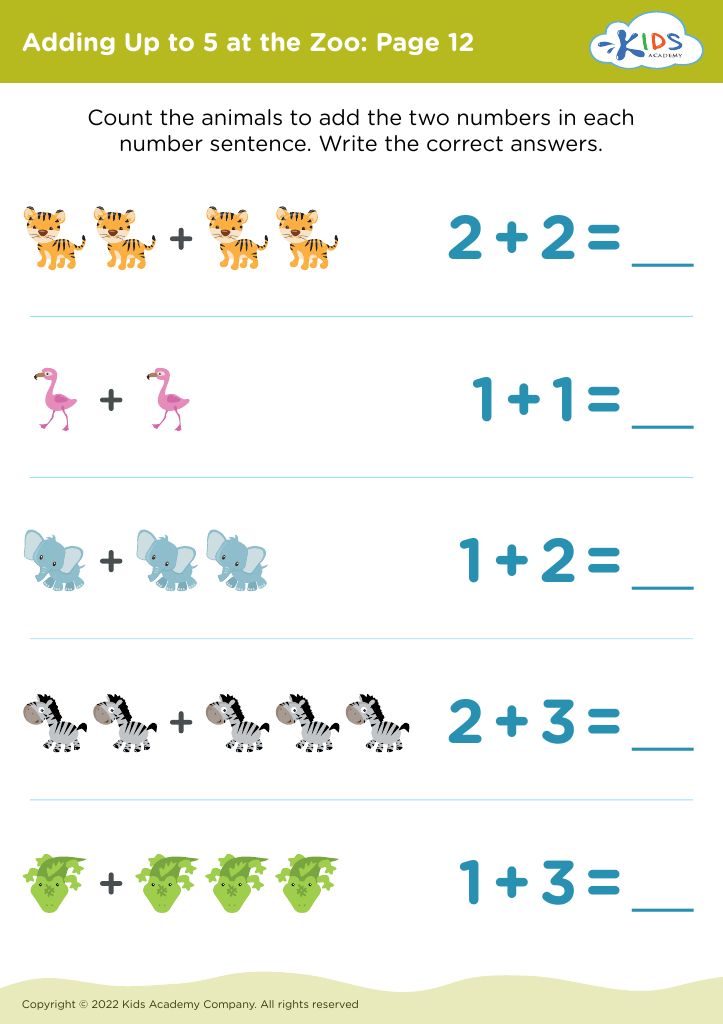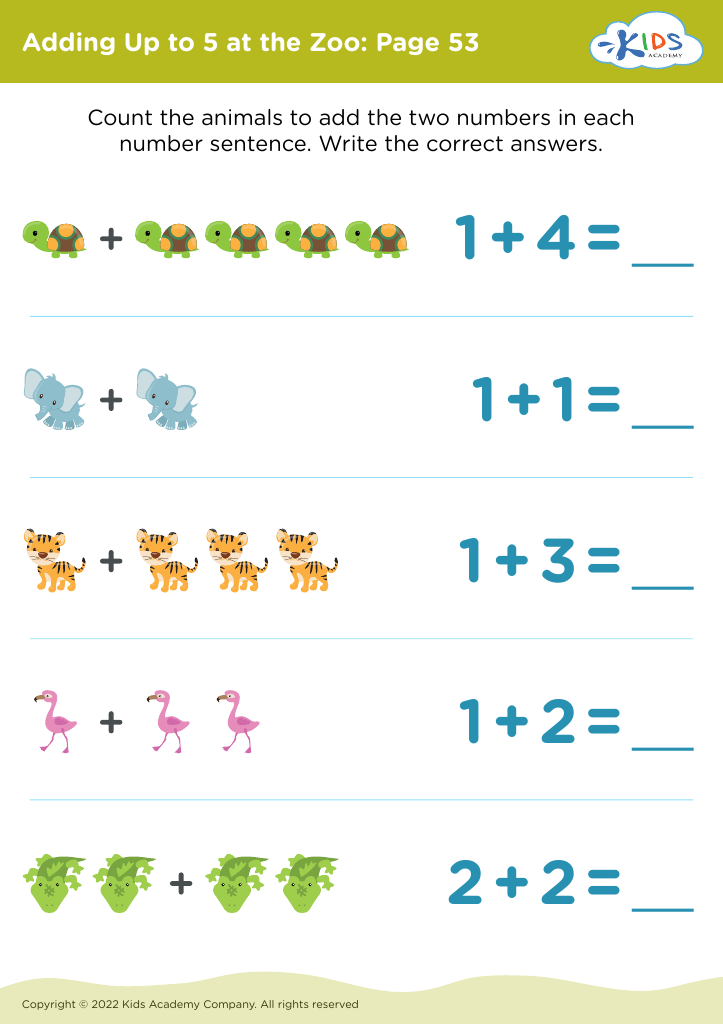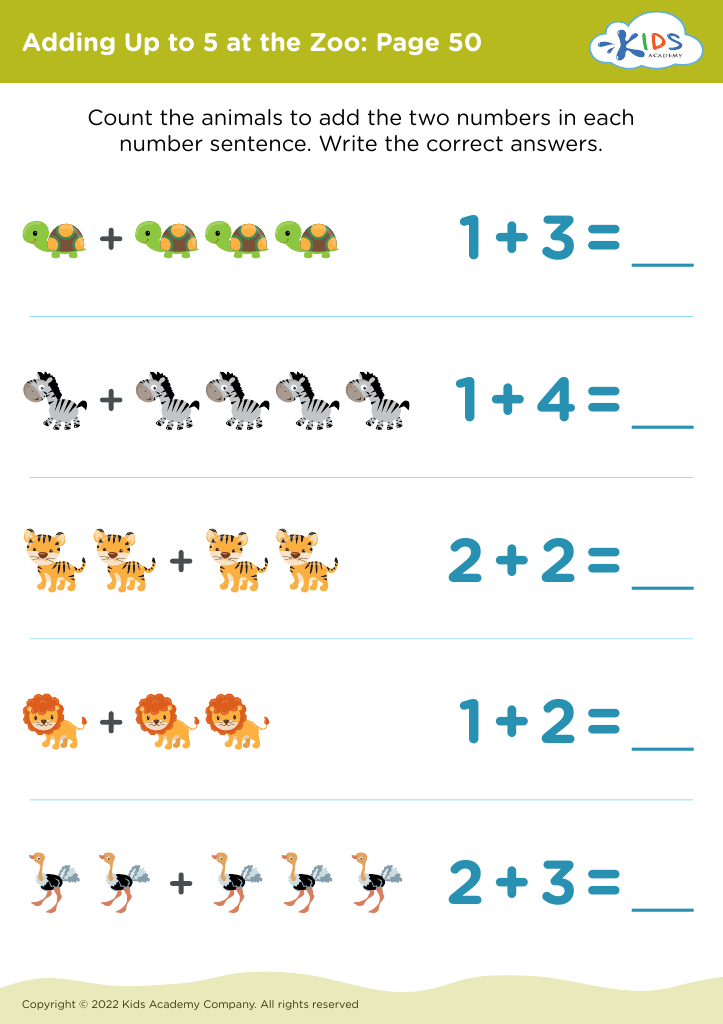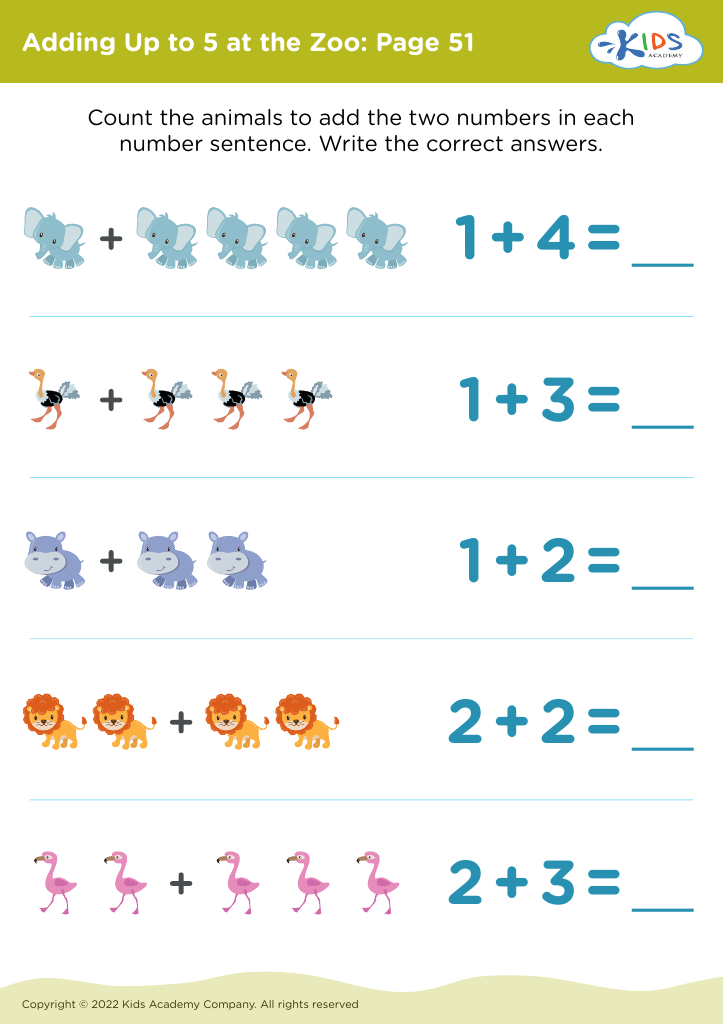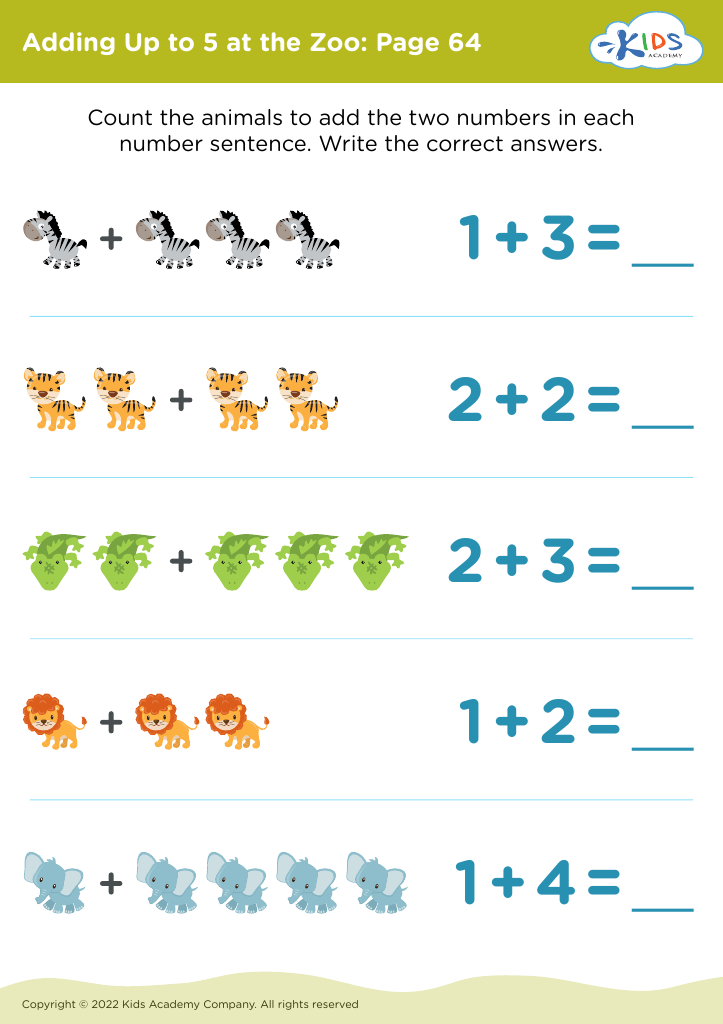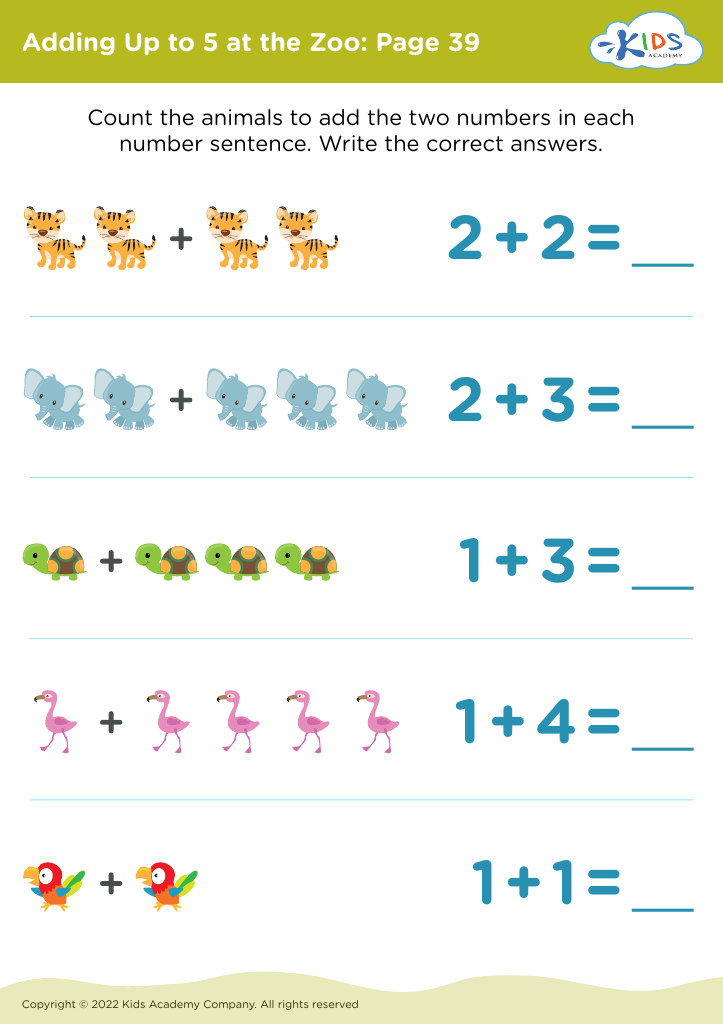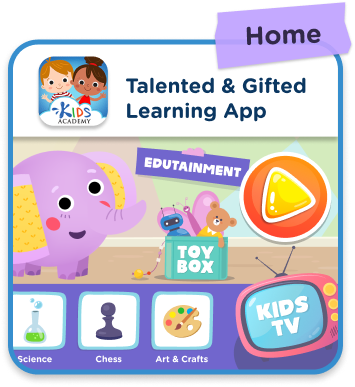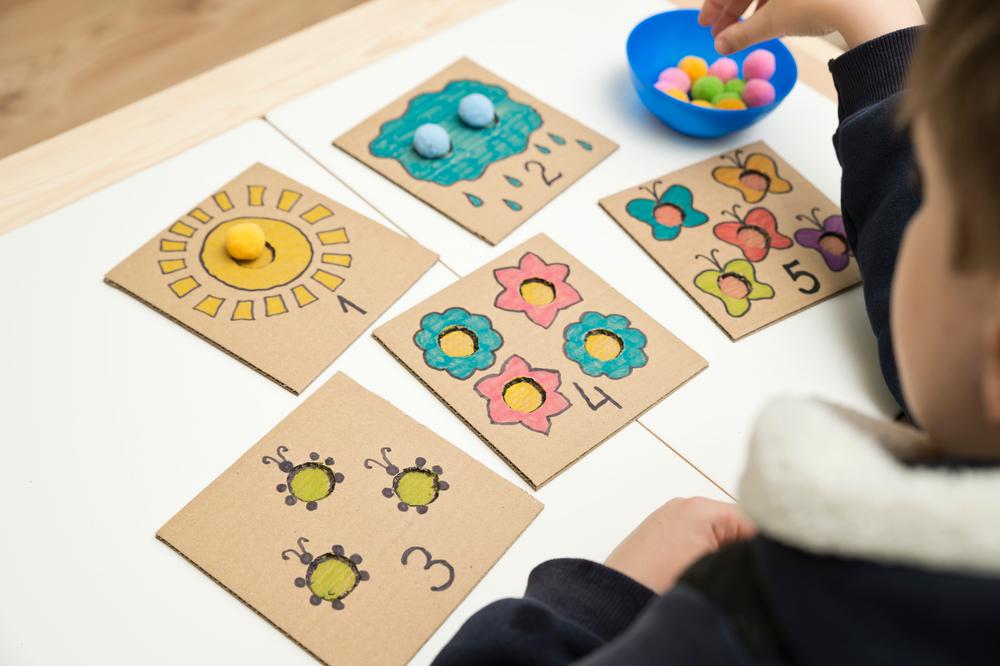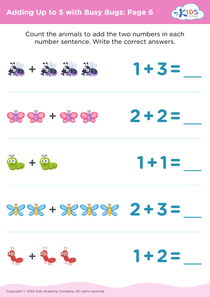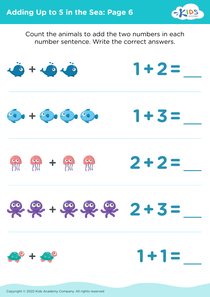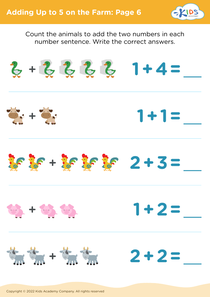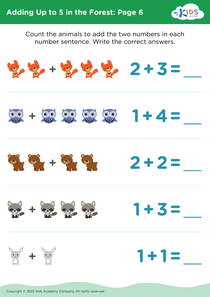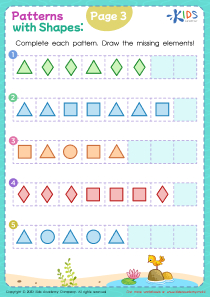Animal recognition Adding at the Zoo Worksheets for Ages 5-7 - Page 2
43 filtered results
-
From - To
Animal recognition at the zoo is vital for children aged 5-7 as it serves multiple developmental purposes. First, it fosters an appreciation for biodiversity, helping young learners understand that animals come in various shapes, sizes, and habitats. This foundational knowledge promotes empathy towards animals and encourages a lifelong respect for wildlife and the environment.
When parents and teachers engage children in identifying animals, they enhance critical thinking and observational skills. Learning to distinguish between different species encourages curiosity and stimulates questions, enabling kids to explore topics like ecosystems, animal behavior, and conservation efforts.
Furthermore, during trips to the zoo, social interaction among peers is encouraged; identifying animals together cultivates teamwork and communication skills. This collaborative learning reinforces language acquisition as kids describe and articulate their thoughts about each animal.
Moreover, zoo visits often incorporate fun, interactive methods of learning, such as games and educational talks, making the process enjoyable. Through these experiences, children build memories and strong associations with learning, linking the excitement of animals to the joy of discovery. Engaging with animal recognition now lays the groundwork for greater environmental awareness in the future, making it important for parents and teachers to prioritize this engaging activity.

